American eventer Elisa Wallace has tackled the biggest courses in the sport with off-the-track thoroughbreds. She’s also competing with success aboard another breed she’s says has an equally big heart — the Mustang.

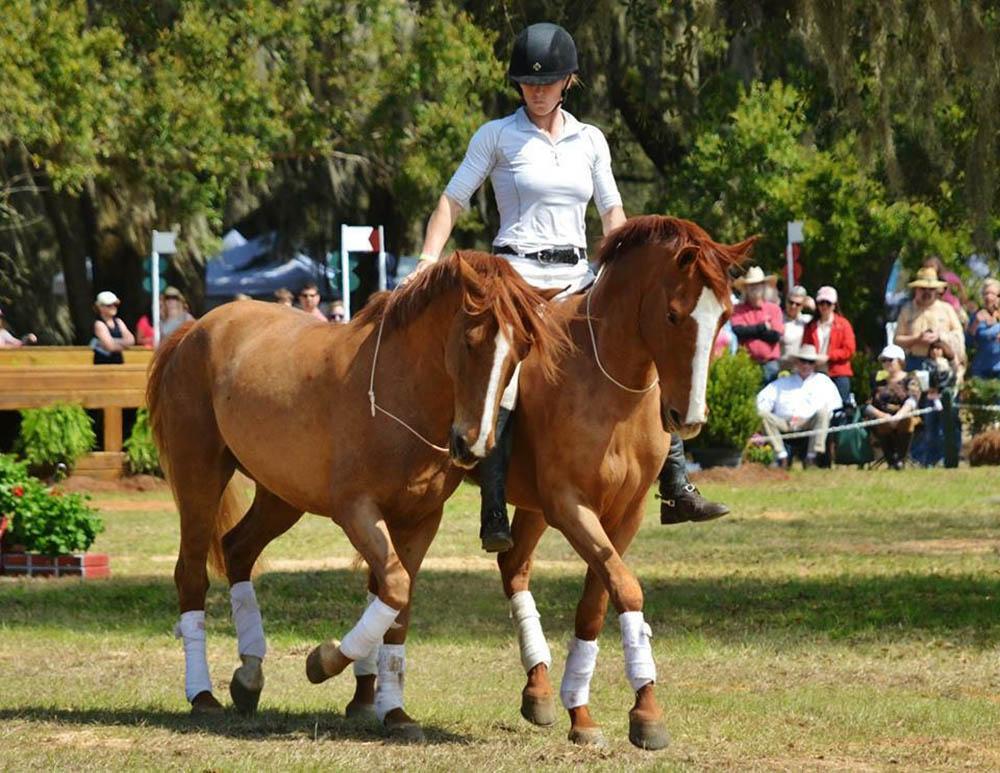
Five-star eventer Elisa Wallace has been involved with horses her entire life. Born into a horsey family in Georgia, her father was an eventer and her mother a breeder. In the saddle before she could walk, Elisa began eventing by age four. As a child, she was often found sleeping or playing with the young foals her parents raised, and the family joked that Elisa was part-horse.
At the age of nine, she was the youngest eventer to win a gold medal at the Georgia State Games in Combined Training, and then a few years on the Hunter/Jumper and equitation scenes followed before she returned to her eventing roots in her late teens.
In 2000, Elisa saved all of her high school graduation money and purchased a $700 Thoroughbred yearling she had found via the internet. On a gut feeling, she and her mum made the trek to Kansas to purchase Jackson; he went on to became a successful Advanced horse and was one of Elisa’s top competition horses. Along with her mare Leap of Faith, in 2006 and 2007 Elisa became a force to be reckoned with on the American eventing circuit.
Following the retirement of both of her top horses due to injury in 2008, and the untimely death of Good for Me (another promising star) in 2009, Elisa continued to seek out and train young and talented horses, rebuilding Wallace Eventing from the ground up using a gifted eye for identifying “diamonds in the rough”.
She has trained and worked with many top riders — such as Nick Larkin, Stephen Bradley, Peter Graym, Ralph Hill and, more recently, Karen O’Connor — and her lifelong goal has always been to represent her country in the sport she loves. She came close; in 2016, Elisa was listed as an alternate for the 2016 US Olympic team with an off the track Thoroughbred. This narrative, when summarised, is not unlike others at the elite end of the sport. However, not every elite rider decides to saddle up a Mustang.
A MOVE TOWARDS MUSTANGS
“My first exposure to Mustangs was the 2012 Extreme Mustang Makeover,” begins Elisa, referring to an event created and presented by the Mustang Heritage Foundation to showcase the beauty, versatility, and trainability of the breed. “My Friend Rebecca Bowman actually signed me up for it. The competition was during the summer and I only had some green eventers at that time. I didn’t have any upper-level horses at that moment, so I was interested in doing the competition; training a Mustang had always been on the bucket list.”
Elisa was partnered with a 13.3 hand Mustang hailing from the Medicine-Maverick Mustang herd in Nevada. She named him Fledge, after the winged horse in the book The Magician’s Nephew, and the pair went on to win the event. “I originally had a plan of rehoming him, because what was I going to do with a 13.3 hand Mustang? But I fell in love with Fledge and couldn’t bear the idea of not keeping him. He has been a huge asset for me and my career, on top of being priceless,” continues Elisa.
A year later, she decided to enter the Mustang Million, a similar competition to the Extreme Mustang Makeover — but with USD$1 million in prizemoney! She adopted a very talented 14.3 hand, three-year-old Mustang from the East Douglas/Piceance herd in Colorado, whom she named Rune (which means “secret”). Rune did very well in the competition and ended up placing 30th out of 190 contenders.
Since then, Elisa has given demonstration rides with Rune and Fledge at major international equestrian events, such as the American Eventing Championships, the Rolex Kentucky Three-Day Event, and the Wellington Global Dressage Festival. She also performed in the Mustang Magic Celebrity Freestyle event, held as part of the Fort Worth Stock Show & Rodeo. With a Mustang mare named Hwin, she showcased the breed’s eventing potential and finished fourth. Hwin went on to become incredibly popular with audiences around the US — so much so that iconic toy horse manufacturers Breyer released a model in her honour!
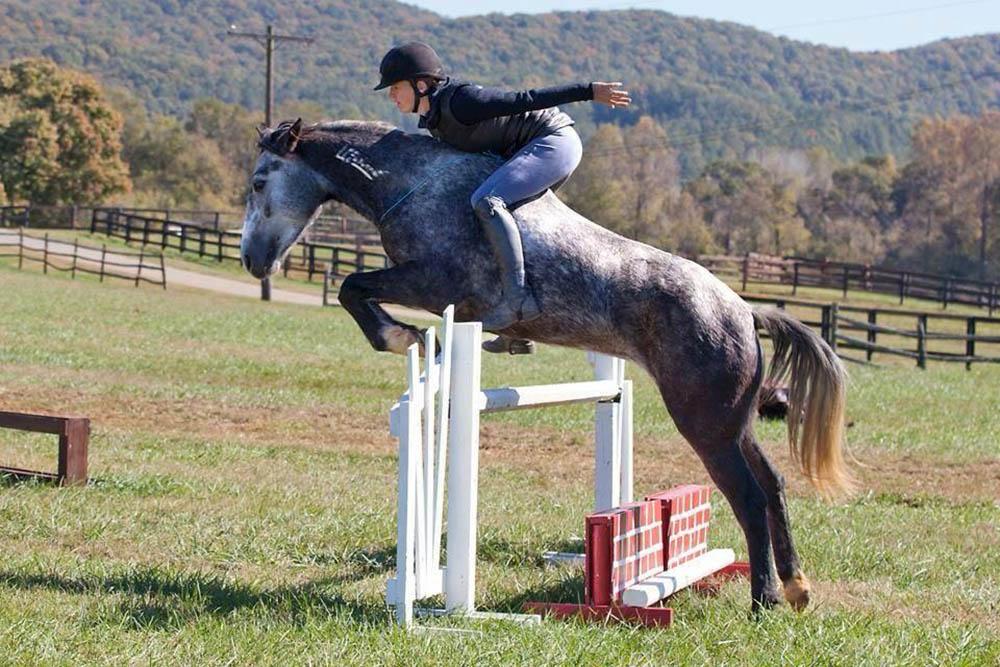
AIMING FOR ADVANCED
“A goal of mine is to get a Mustang up to the Advanced Level (the highest national level in the US with jumps reaching 3’11” or 120cm). I haven’t attained that yet. But I have competed Hwin to Preliminary (3’7” or 110cm, two levels off Advanced). I have two other Mustangs, Eton and Wyeth, who are talented and athletic, so we shall see how far they will go. They are from the Green Mountain Herd Management Area (HMA) in Wyoming.
“I originally picked Wyeth for the TIP (Trainer Incentive Program) Challenge, an in-hand training challenge held in Georgia, and Eton as a back-up horse because at the time of pick-up Wyeth was lame. He had a horrible foot abscess and also an old fractured jaw that led to a tooth infection. He was willing enough that I was able to put him on antibiotics and train him so then we could eventually do surgery on his tooth. He was able to compete in the competition and did well, and he has recovered from his surgery and has since been competing at Novice level (2’11” or 90cm).
“I knew Eton was going to be tough, and he has been one of the most difficult Mustangs that I have trained. He has a superior flight response and thus his name Eton is the name of a mythical horse, which means ‘swift as an eagle’. It’s been a journey for sure. He too is now competing successfully in eventing.”
As someone who has welcomed Mustangs into her stables for the better part of the last decade and advocates for the breed’s talents, Elisa explains that the management of the mustangs in the US is a very complicated one — not unlike the Brumbies here is Australia.
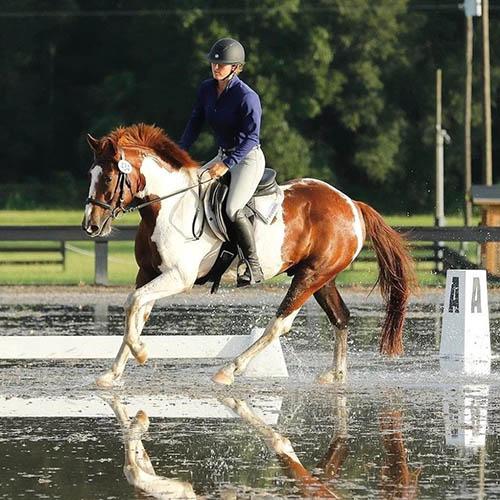
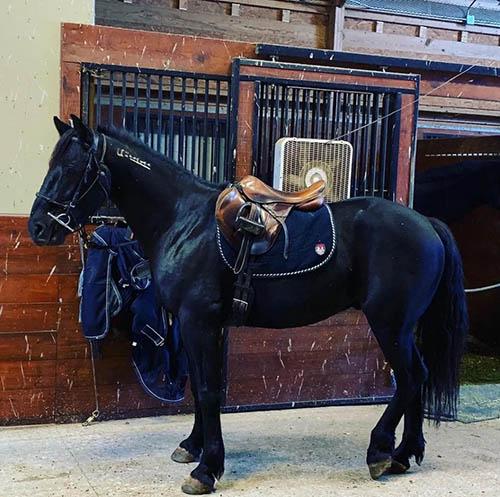
“In the US there are several programs that try to help bridge the gap between the public and Mustangs with the help of talented trainers, with the makeover-style competitions designed to increase awareness of the Mustangs.
“As a Mustang advocate, I do my best to spread the word and prove how amazing the Mustangs are and that they are worth saving. The population control is a battle that doesn’t have any easy answer. I do think there is a balance and management that is needed. I know there has been the use of birth control with PZP (an immunocontraceptive), and also round-ups… but those corralled are then put in the holding facilities and just sit there. I think the key could be in managing the birth control of the young. Most fillies are bred at just over a year old, so if they were able to control the births from ages one year to four, that could help cut down the population significantly.”

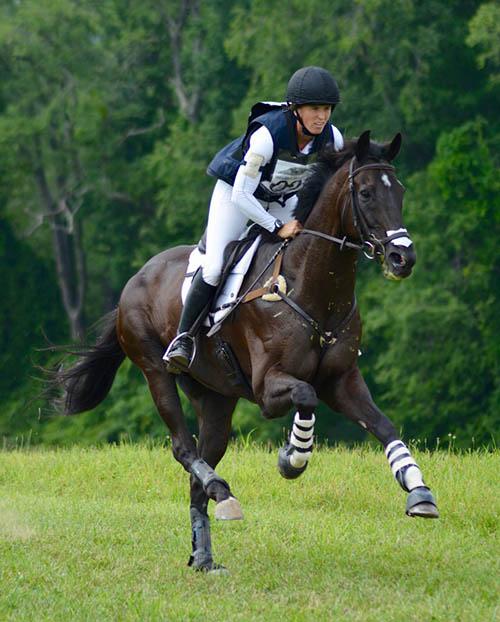
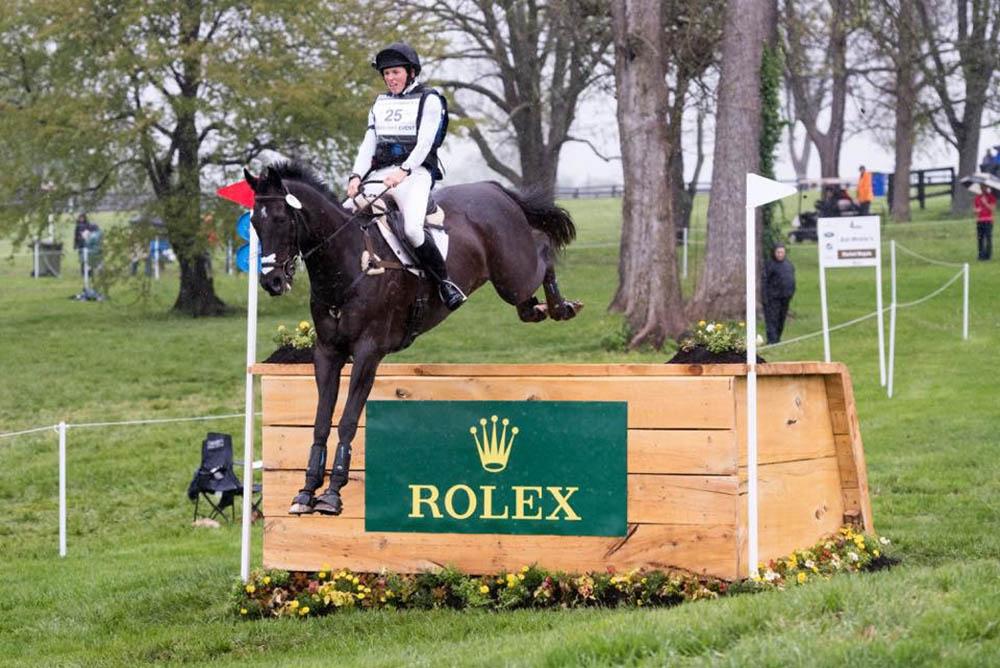
FELLOW UNDERDOGS
The American Mustang is not the only breed Elisa has a passion for. Since purchasing Jackson for $700 as a teenager, Elisa has gone on to compete at the highest level with a number of other Thoroughbreds — including an Australian. Simply Priceless, aka Johnny, is a 16.2-hand 2001 Australian Thoroughbred gelding by Waterford Road out of Faux Franc (Twig Moss) who was bred in Queensland and had 10 starts under the name Kalinga Damo; he never won.
Imported to the US by Simone Kaan, Johnny was sold twice before Elisa was able to get the ride on him as a three-star (old classification system) horse after her dad, Rick Wallace — also a keen eventer — turned it down. “I got the ride on Simply Priceless in 2013. After two years of competition, I was able to form a syndicate (comprised of Steve and Vicki Sukup, Susan Day, Kim and Larry Loveless, and her father) and buy him, as the owners were getting out of horses.”
Although he was a relatively experienced eventer when she took over the ride, Elisa explains that Johnny was far from easy — his split personality could see him turn from “puppy-dog mellow” to “the dragon”. It took a long time to build their partnership — often riding him bareback in a halter — and although he was a cross country machine, the focus required for dressage and show jumping didn’t come easily.
“It has been a fairy-tale career for me and Johnny, competing at five five-stars,” says Elisa, the highlights of which were being named as an alternate for the 2016 Rio Olympics, as well as finishing eighth at Kentucky and 14th at Burghley the same year.
Elisa says that Johnny, now retired at age 20, is the best cross country horse she’s ever ridden, and no jump was too big for him. “He has fulfilled so many of my dreams and has earned his retirement. We go on fun bareback rides, and he is happily getting all of his favourite cookies, but of course he always rules the barn as he is the king!”
Elisa currently has a number of Thoroughbreds still competing, including Let It Be Lee, Sharp Decision and Munson Slew, as well as Oldenburg gelding Riot Gear. Alongside her Mustangs, it’s a solid team. Although one might think the breeds are worlds apart — one carefully bred for centuries, the other running free and creating their own lineage — there are some similarities.
“Mustangs and Thoroughbreds are very similar in that they are often stereotyped as underdogs. Mustangs can take a bit more retraining in the beginning than an off-the-track Thoroughbred, but the patience and time that is needed is similar. Both have incredible heart, and once you gain their trust they will do anything for you.” EQ
You can follow Elisa Wallace’s eventing journey with her Mustangs and Thoroughbreds via these links:
www.facebook.com/wallaceeventing
YOU MIGHT ALSO LIKE TO READ:
‘Record 8th Olympics For Hoy The Country Boy’ – (Equestrian Life, July 2021)



